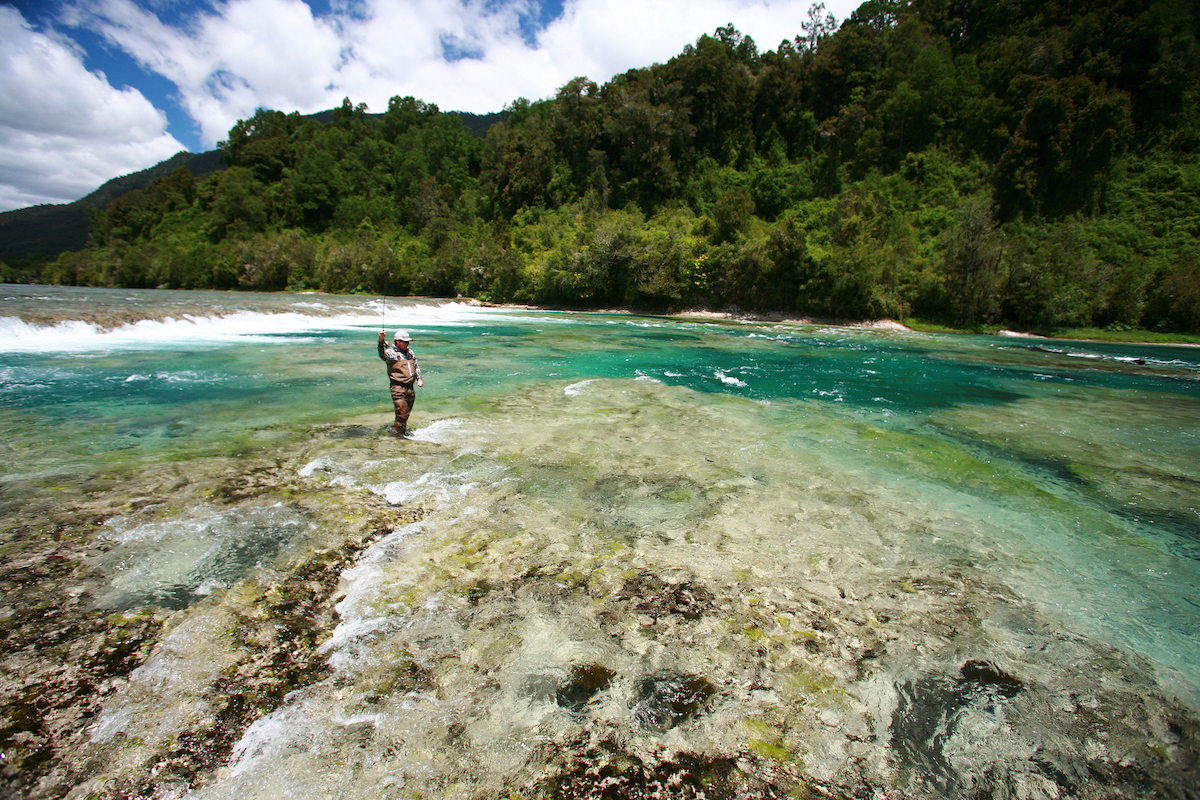 Rio San Pedro, Chile. Photo: Brian O'Keefe
Rio San Pedro, Chile. Photo: Brian O'Keefe
By Jimmy Langman
One of the world’s top fly fishing photographers, Brian O’Keefe has been a fly fishing guide and instructor, fishing tackle rep, and for more than two decades has photographed around the globe for international media such as Fly Fisherman, Fly Rod & Reel, Field & Stream, and Los Angeles Times. Based in Oregon, he is also co-founder of Catch Magazine (www.catchmagazine.net), a digital zine featuring fly fishing photography and videos. A frequent contributor to Patagon Journal (his photo is featured on the cover of edition 12 of the magazine) and a member of the panel of judges for the Third Patagonia Photo Contest, we recently chatted with Brian to learn more about his views about and longtime career in photography. Excerpts:
You have been a fly fishing photographer since you were 16-years-old. What led you to decide to make it a career? That made me chuckle! Personally, I have never considered photography a career or job. I call it a hobby out of control. When I was in my 20’s I started selling photos every month, but it is not high paying work. The rewards are in other things; travel, great fishing, meeting super skilled guides and eating well. I always had a real job. From 1980 to 2007, I was a sales rep in Washington State, Oregon and Alaska for companies like Orvis, Umpqua, Patagonia, Scott Rods, and Simms. From 2007 to 2014, I was co-owner of Catch Magazine.
What are your favorite places for fly fishing in Chilean and Argentine Patagonia? Patagonia River Guides (PRG) took me on a tour of Argentina for three weeks and it was awesome. The Middle Limay was incredible as we hit a hatch of small mayflies and we got big fish on light tippet. The Rio Pico area was great lake fishing and fishing out of Esquel, in a national park, was fantastic. In Chile, I have had so many amazing days. Fishing the big, dry dragonflies at Yelcho is epic. The water color of the San Pedro River is life changing. It is impossible to pick a favorite. When I miss a location it is usually the people I miss first. Like Hernan Lepeley with Rucapeley, Sebastian Galilea at Cinco Rios/Estancia del Zorro, everyone at Estancia Laguna Verde, and Marc at Rod and Gun in Santiago.
Of all the places you have traveled around the world to go fly fishing and shoot photos, what was your most memorable experience? Years ago, I would camp in the Bahamas, way out in the wilderness. I had a sea kayak, a cooler, water and a tent. We would get dropped off for a week. There were miles and miles of wade-able flats. Living off the land, eating fish and finding big bones was really fun.
We feature one of your photos on the cover of edition 12 of Patagon Journal. What’s the backstory for that amazing shot? That’s my buddy Marc Whittaker of Rod & Gun Fly Shop in Santiago. We were staying at Baker Lodge and that is a tributary of the Baker River near Cochrane. There are a few rainbows in the pockets. The photo was easy. It had the action of the waterfall, a nice silhouette and some wow factor.
What for you are the elements that make for a great photo? Whether it is an action shot, a landscape or close up of a fish, I want sharp focus and good exposure. There are a million good shots, but I like them sharp with good light and color.
What advice do you have for photographers? Interesting angles, as in down low or up high, an original situation and elements that evoke humor or excitement or passion. And no fish torture.
How is outdoor sports photography like fly fishing photography different from other kinds of photography? And any tips for fly fishing photography? Any form of photography that includes a live animal/fish is just a lot harder. When that moment arrives when a good fish shot is available, the light may be bad or the background is boring, or a thousand other variables. Or, the big one gets away! In golf, if you miss a shot, there will be many more all day long. All photography takes practice and decent equipment. My best tip is to go to really pretty places and hold your camera still.
What are some of your current and future projects? I’m working on a Chile fly fishing book, just the photos. I’m updating all my PowerPoint shows that I show to fly fishing clubs. I also built a small aquatic insect photo studio. That is really fun.
 Rio San Pedro, Chile. Photo: Brian O'Keefe
Rio San Pedro, Chile. Photo: Brian O'Keefe















.gif)



